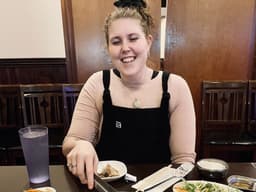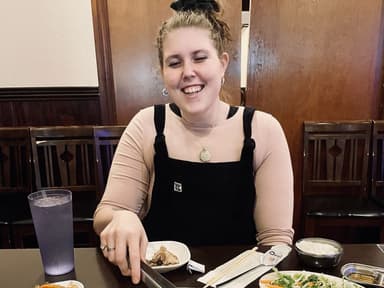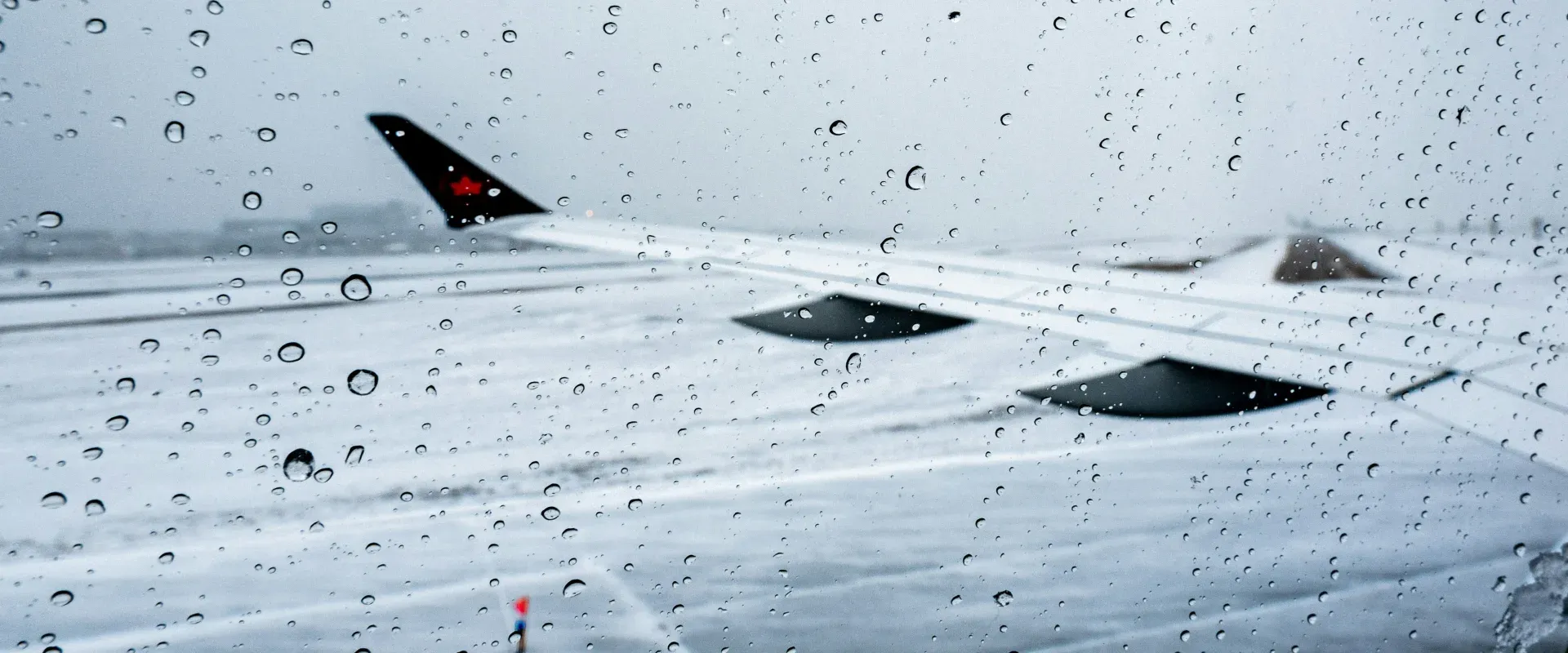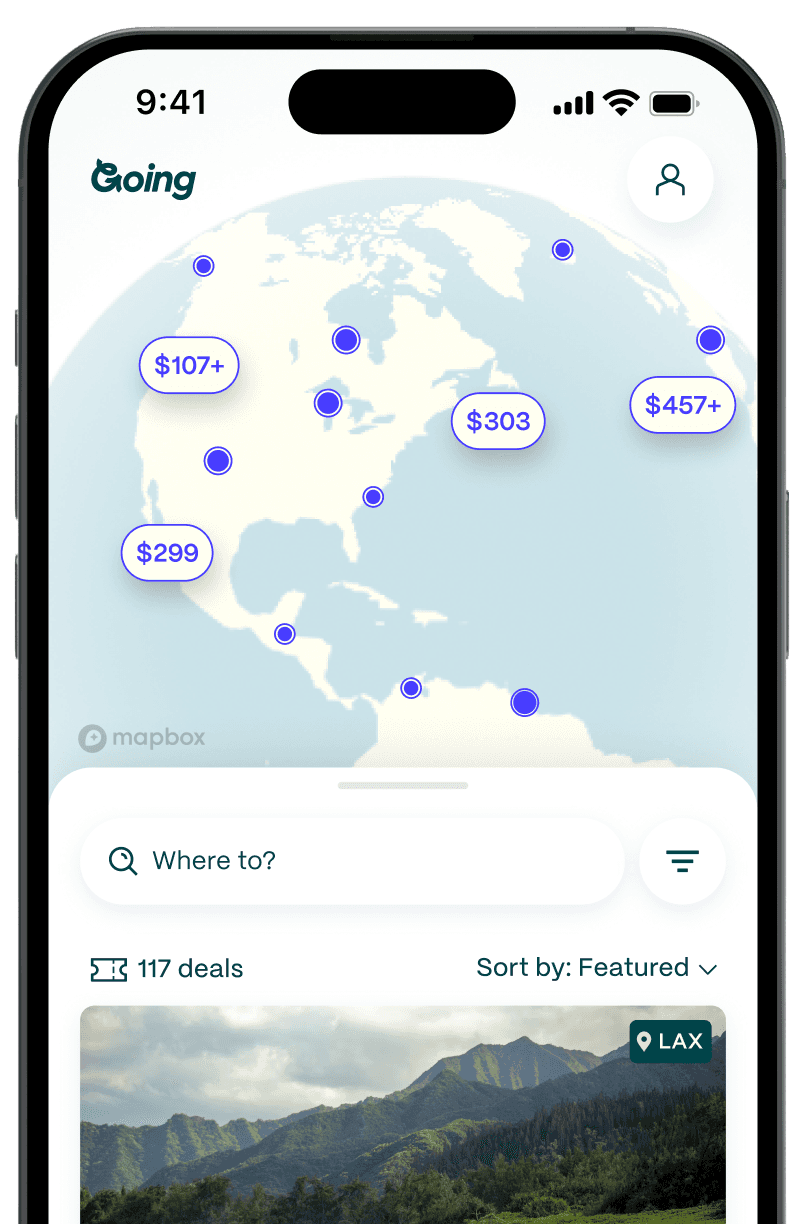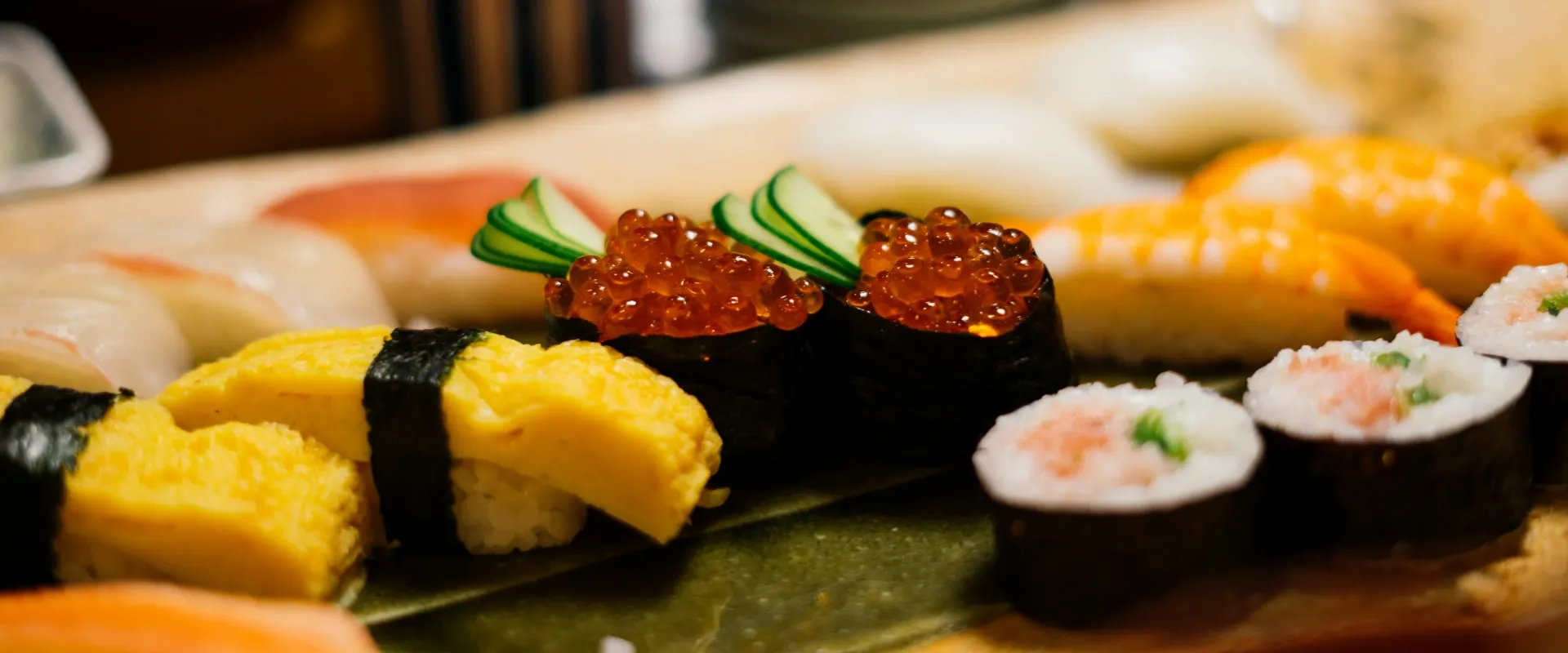
Traveling in Japan With Food Allergies: Expert Tips and Resources To Help
Planning a trip to Japan, but worried about managing your food allergies? You're not alone. Japan's cuisine is renowned worldwide, but navigating it with allergies requires some preparation. This guide will help you enjoy Japanese food safely while avoiding a variety of allergens and also provide you with a map of places to try out regional cuisines.
Top tips for visiting Japan with allergies
- Take advantage of Google Translate. Generally speaking, the locals aren't afraid to use it to communicate with you, nor should you be afraid to use it to communicate with them. From cab drivers to shop owners, Google Translate is one of the easiest ways to break down the language barrier.
- Children's food sections can be helpful. Many children in Japan are allergic to wheat and other common allergens, then grow out of these allergies. When in doubt, check the children's section of grocery stores for allergen-friendly options.
- Bring snacks from home. While you'll find safe options, such as plain potato chips and onigiri, having a supply of familiar snacks makes daily travel much easier.
- Look for "allergen-free" rather than specific allergen listings. Restaurant menus typically group allergen-free options together rather than breaking them down by specific conditions.
- Food delivery is an option. Uber Eats and Wolt are widely available for nights when you want to stay in or don't have kitchen access. Just be prepared for longer delivery times.
Getting to Japan: Airline meal information
When flying to Japan, here's how to handle your food allergies during your flight:
- Request special meals early: Book your allergy-friendly meal at least 48 hours before departure. Most airlines offer gluten-free, dairy-free, and other allergen-free options.
- Double-check at check-in: Confirm your special meal request was registered when you check in for your flight.
- Bring backup food: Even with special meal requests, always pack safe snacks in your carry-on. Long-haul flights to Japan can last 10+ hours, so be prepared.
- Alert the cabin crew: Let your flight attendants know about your allergies when you board. Some airlines, such as JAL and ANA, have allergen information cards available on request.
- Use wet wipes: Clean your tray table and armrests before eating to reduce cross-contamination risk.
- Consider mid-flight timing: For medications that need to be taken with food, factor in Japan's time zone changes to maintain your schedule.
Useful resources
- Find Me Gluten Free: An essential app for travelers with celiac disease or gluten intolerance. The app provides user-reviewed listings of restaurants with gluten-free options throughout Japan, particularly in major cities.
- Equal Eats: Offers customized food allergy translation cards in Japanese.
- SelectWisely: Provides durable, wallet-sized translation cards for various food allergies.
- Food Allergy Research & Education: Offers resources for traveling with food allergies, including chef cards.
- Gurunavi: Japan's largest restaurant guide with an English interface. While not specifically for allergies, many restaurant listings include menu information that can help identify safer options.
- We’ve also created an allergy card template for you to use here.
- Social media accounts:
- Private tours:
- Japan by Food: For all food allergens
- Gluten Free Tours Japan: They handle calling all the restaurants, questioning about safety, making reservations for you, and more—all you have to do is show up. If it's a small establishment, the service tells you what's safe, you pick what you want, and then they order it for you. You verify what you got is what you ordered with them when it's brought out, and you're good to go. They handle grocery shopping labels/convenience store labels too when you're getting something on the run.
Understanding food allergies in Japan
Japanese cuisine relies heavily on ingredients like soy, fish, wheat, and shellfish—which are all common allergens. While awareness of food allergies has increased in recent years, especially in major cities like Kyoto, Osaka, and Tokyo, it's still not as widely understood as in some Western countries.
In Japan, only seven allergens must be labeled by law: eggs, milk, wheat, buckwheat, peanuts, shrimp, and crab. Other allergens, like corn, are not required to be labeled, making vigilance especially important.
The majority of allergy information and resources available for travelers to Japan focus on gluten-free diets. Dairy, nuts, and fish are more commonly labeled and easier to identify on packaging. Corn is trickier to avoid (especially high fructose corn syrup), but ingredients are still listed on labels. For most allergens beyond gluten, using Google Translate to read labels and communicating directly with waitstaff will be your best approach.
Quick guide
🥖 Gluten/Wheat (小麦 - komugi)
- Soy sauce (醤油 - shoyu)
- Ramen, udon, and most soba noodles
- Breaded and battered foods (tempura)
- Many soups and broths
- Most baked goods
🐟 Fish (魚 - sakana)
- Dashi stock (used in most soups and broths)
- Bonito flakes (鰹節 - katsuobushi)
- Fish sauce (魚醤 - gyosho)
- Fish cakes (kamaboko)
- Hidden in many seasonings
🌽 Corn (とうもろこし - toumorokoshi)
- High fructose corn syrup (HFCS) - ぶどう糖果糖液糖
- Processed foods and sweets
- Many beverages
- Some medications
- Corn starch in sauces and processed foods
🌰 Tree Nuts (木の実 - kinomi)
- Almond milk (most common alternative milk)
- Desserts and pastries
- Salad toppings
- Cooking oils
- Some rice crackers
Specific allergen information
🥖 Celiac/wheat allergies
Takeaways
If gluten is your only allergy, you're in luck, as more places have gluten-free offerings. The number one allergen in kids in Japan is wheat, which most grow out of, so you can find kid-friendly and allergen-friendly meals on some menus and in grocery stores.
A great option is Coco Ichibanya, a curry chain in Japan. Their allergen-friendly curry is packaged separately with zero risk of cross-contamination. It comes with steamed rice that has no sauces and is perfect for anyone allergic to wheat, corn, soy, fish, meat, dairy, eggs, shellfish, and tree nuts. Additionally, there’s Mo’s Burgers, which also has allergen-free options.
Konbini foods okay to eat
- Rice balls (onigiri) without fillings or with simple fillings like umeboshi (pickled plum)
- Plain rice packs: Often found refrigerated, can be microwaved for a quick meal
- SoyJoy bars: Typically marked "グルテンフリー" (gluten-free), these fruit-flavored soy bars are widely available. Note, however, that most are not nut-free
- Yogurt: Plain yogurt with fresh fruit is safest; check labels on flavored varieties
- Hard-boiled eggs: A safe protein source available at most convenience stores
- Natto: Fermented soybeans (an acquired taste but gluten-free)
- Purin: Japanese custard pudding similar to flan, usually gluten-free but verify
- Haagen-Dazs ice cream: Many flavors are gluten-free (avoid cookie varieties)
- Fresh fruit: Although expensive, pre-cut fruit is available at most stores
- Plain potato chips like Calbee (check labels)
Restaurant foods
- 100% buckwheat soba (labeled as "十割そば" or "jūwari soba")
- Specialized gluten-free restaurants in major cities
- Plain grilled meats without marinades
- Plain rice dishes
Unexpected items with allergens
- Most soy sauce contains wheat
- Many soups and broths contain hidden wheat
- "Fu" - decorative wheat gluten elements in soups
- Imitation crab and fish cakes often contain wheat as a binder
- Japanese Doritos and many snacks: Often contain soy sauce with wheat
🐟 Fish/shellfish allergies
Takeaways
Fish and seafood are fundamental to Japanese cuisine, making this one of the most challenging allergies to navigate. Dashi (fish stock) is used in countless dishes, including soups, sauces, and marinades. Even seemingly fish-free items might contain bonito flakes or fish-based seasonings.
Konbini foods okay to eat
- Fresh fruit and vegetables: Available pre-cut at most stores
- Plain rice balls: Choose varieties without fish (avoid those marked with 鮭/さけ/サーモン for salmon)
- Packaged salads: Check for ones without fish toppings or dressings
- Some bread products: Check labels carefully for fish-derived ingredients
- Hard-boiled eggs: Good protein source without fish ingredients
- Yogurt: Plain varieties are typically fish-free
- SoyJoy bars: Fruit and soy-based snack bars without fish ingredients
- Select onigiri: Look for vegetable or plum (梅/うめ) fillings instead of fish
Unexpected items with allergens
- Miso soup (usually contains dashi)
- Many sauces and seasonings
- Rice crackers with bonito flavoring
- Salad dressings
- Stock cubes: Often contain fish extracts
- Furikake rice seasonings: Typically contain fish flakes
🌽 Corn allergies
Takeaways
High fructose corn syrup (HFCS) is pervasive in Japanese food products. The process of producing HFCS efficiently was introduced by Dr. Yoshiyuki Takasaki in Japan, making it a common ingredient in beverages, sweets, coffees, and even medicines.
When checking labels, look for these terms that indicate corn syrup:
- ぶどう糖果糖液糖
- 異性化糖
- 果糖ブドウ糖液糖
- 高果糖液糖
Popular drinks such as Pocari Sweat contain HFCS. If you see what looks like a creamer packet labeled "Gum" at a coffee shop, it's actually a container of HFCS. Some soy sauces, mirin, miso, and other condiments have HFCS added to enhance flavors. Additionally, there might be “glucose-fructose syrup” in some dishes as an ingredient—this is a mixture of sugar syrup and HFCS.
Konbini foods okay to eat
- Plain rice balls: Basic onigiri without sauces or seasonings
- Fresh whole fruits: Avoid pre-cut options with syrups
- Hard-boiled eggs: Good protein source without corn derivatives
- Plain rice packs: Simple, unseasoned microwaveable rice
- Some plain potato chips: Read labels carefully for corn oil or starch
- Plain yogurt: Avoid sweetened varieties that may contain HFCS
- Nuts and seeds: Unseasoned varieties (if not allergic)
- Rice crackers: Most plain varieties may be corn-free (check labels as they might use corn oil to fry the crackers)
Unexpected items w/ allergens
- Most sweetened beverages: Sodas, sports drinks, sweetened teas
- Many sauces and condiments: Especially those with sweeteners
- Some medicines and supplements: May contain corn-derived fillers
- "Gum" syrup packets: Actually high fructose corn syrup packets
- Pre-packaged desserts: Most contain HFCS
- Many ice creams: Check for corn syrup or corn starch
- Almost all candies, chocolates, and sweets (including some store bought mochi; fresh mochi doesn’t contain HFCS)
🌰 Tree nut/peanut allergies
Takeaways
Alternative milks in Japan are predominantly almond milk (in coffee shops) rather than soy milk. While soy milk is available and easier to find than oat milk, it's not as common in coffee shops as almond or whole milk. Soy is easier to find in stores and Konbinis, however.
Consider buying shelf-stable oat milk if you find it at places like Blue Bottle and keeping it on hand, especially if you're staying in one location with refrigeration.
Places to watch for peanuts
- Curries: Peanut butter is a common additive in Japanese curries, used as a thickening agent. The chain Coco Curry, in particular, uses peanut butter in every curry dish.
- Tare (meat dipping sauce/marinade): Peanut butter can sometimes be used as a thickener. Often at yakiniku (grilled meat) restaurants, they'll give you the option of tare or salted meat—choose salted to minimize risk. Ponzu (a citrus-based soy sauce) is a great alternative.
- Ramen: Peanut butter might be used as a thickener for the broth, or peanuts may be sprinkled on top for texture. *Tan Tan Men, in particular, is a peanut-based ramen—avoid this if you have a peanut allergy.
- Salad dressings: Some dressings use peanut butter or peanut oil as a thickener. Stick with clear dressings, such as vegetable or wafu.
- Okinawan specialties: Jimami tofu is made from peanuts instead of soybeans. Also, in Okinawa peanut flour can be mixed in with kinako (soybean flour) when sprinkled on mochi.
Konbini foods okay to eat
- Plain rice balls: Onigiri without nut-containing fillings
- Fresh fruit and vegetables: Pre-packaged options
- Hard-boiled eggs: Good protein source without nuts
- Plain yogurt: Avoid varieties with nut toppings
- Some rice crackers: Plain varieties (verify no nut oils)
- Plain potato chips: Some varieties without nut oils
- Edamame: Plain soybeans (if soy is safe for you)
- Rice-based desserts: Some mochi (rice cake) varieties without nut fillings; note that powdered soybean toppings sometimes have roasted powder peanut or almond as well, so be cautious
Unexpected items w/ allergens
- Many desserts and baked goods: Especially Western-style options
- Some salad dressings: May contain nut oils
- Coffee shop milk alternatives: Predominantly almond milk
- Some imported snacks: Often contain nuts or nut traces
- Japanese curry: Often contains peanut butter as a thickener
- Some Wagashi (Japanese sweets): May contain nut pastes or fillings
🐄 Dairy allergies/lactose intolerance
Takeaways
Dairy is having a moment in Japan, with many baked goods, hot dishes, and desserts containing cheese or cream. Many coffee shops only offer dairy milk, making it challenging for those with allergies or intolerances.
Consider carrying shelf-stable alternative milk with you. There has been a recent rise in vegan restaurants in larger cities like Kyoto, Osaka, Fukuoka, and Tokyo, which can provide safe options.
Alternative milk terms in Japanese
- Oat milk: オートミルク (Ōto Miruku)
- Soy milk: 豆乳 (Tōnyū) - This is a common and traditional beverage in Japan, and it's referred to by this specific term rather than using the "ミルク" suffix.
- Almond milk: アーモンドミルク (Āmondo Miruku)
- Rice Milk: 米乳 (Kome Nyū) or ライスミルク (Raisu Miruku)
Konbini foods okay to eat
- Plain rice products: Rice balls, plain rice
- Fresh fruit and vegetables: Pre-cut options available
- Plain potato chips: Some varieties (check labels)
- Edamame: Plain soybeans (if soy is safe for you)
- Soy milk: 豆乳 (Tōnyū) available in various flavors
- Onigiri: Most rice ball varieties without cheese fillings
- Some rice crackers: Plain varieties without dairy
- Hard-boiled eggs: Protein option without dairy
- Soy-based desserts: Some dairy-free options available
- Fruit jellies: Many are dairy-free (check labels)
Unexpected items w/ allergens
- Many Western-style baked goods: Often contain butter, milk powder
- Some flavored rice balls: May contain cream cheese
- Cream-based desserts and drinks: Puddings, creamy coffees
- Many packaged snacks: May contain milk powder or whey
- Matcha lattes and other specialty drinks: Often contain milk powder
- Pasta dishes in Italian-Japanese fusion restaurants
- Creamy curries: Even some that appear plant-based
- Many convenience store sandwiches: Contain butter or mayonnaise with dairy
Map of allergen-safe restaurants in Japan
We’ve also created a map of allergen-friendly restaurants throughout Japan to ensure that, no matter where you’re heading, there are at least one or two places to check out. Be sure to take a look at each listing you’re interested in before you go, as some restaurants are dedicated to specific allergies (e.g., gluten free) and may not be suited for all your dietary needs (e.g., gluten free and nut free).
Essential Japanese phrases for allergy communication
General phrases
- "I have a food allergy" - 私は食物アレルギーがあります (Watashi wa shokumotsu arerugī ga arimasu)
- "This allergy is serious/severe" - このアレルギーは深刻です (Kono arerugī wa shinkoku desu)
- "I cannot eat..." - ~は食べられません (~ wa taberaremasen)
Specific allergen phrases
- "I'm allergic to gluten/wheat" - 私は小麦アレルギーです (Watashi wa komugi arerugī desu)
- "I'm allergic to fish" - 私は魚アレルギーです (Watashi wa sakana arerugī desu)
- "I'm allergic to corn" - 私はとうもろこしアレルギーです (Watashi wa tōmorokoshi arerugī desu)
- "I'm allergic to nuts" - 私はナッツアレルギーです (Watashi wa nattsu arerugī desu)
Restaurant questions
- "Does this contain [allergen]?" - これは[allergen]が入っていますか? (Kore wa [allergen] ga haitte imasu ka?)
- "Can you make this without [allergen]?" - これは[allergen]抜きにできますか? (Kore wa [allergen] nuki ni dekimasu ka?)
- "Is there a menu for allergies?" - アレルギー対応メニューはありますか? (Arerugī taiō menyū wa arimasu ka?)
Emergency Information
If you experience a severe allergic reaction:
- Call 119 for emergency assistance
- The word for "ambulance" is 救急車 (kyūkyūsha)
- The phrase "I'm having an allergic reaction" is アレルギー反応が出ています (Arerugī hannō ga dete imasu)
- Show your allergy card to medical personnel
- Have your emergency medication ready and accessible
Top tips for safe eating in Japan
- Get allergy translation cards: Order custom cards before your trip showing your specific allergies in Japanese. Services like SelectWisely and Equal Eats offer durable translation cards.
- Research restaurants in advance: Use Find Me Gluten Free and other apps to locate allergen-friendly restaurants. Call ahead when possible to confirm they can accommodate your needs.
- Be cautious with street food: Food stalls often don't list ingredients and may use shared cooking surfaces.
- Learn to read labels: Look for アレルギー物質 (allergen substances) sections on packaged foods.
- Consider apartments with kitchens: Having the option to prepare your own meals gives you more control.
- Bring emergency medication: Always carry antihistamines, epinephrine if prescribed, and wear a medical alert bracelet.
- Look for department store food halls: Depachika (department store basement food halls) often have detailed ingredient listings and staff who can help with allergies.
- Check children's food sections: These often have clearer allergen labeling and more allergy-friendly options.
- Consider a private food tour: Services like Gluten Free Tours Japan can ensure safe eating experiences.
- Learn key phrases: Memorize how to explain your allergies and ask about ingredients in Japanese.
Allergen-friendly grocery shopping
Finding specialty ingredients and allergen-friendly foods is getting easier in Japan. Here are some recommended grocery stores:
- Natural House:
- A chain of organic supermarkets with a wide selection of natural and vegan options
- Multiple locations throughout Tokyo
- Offers a variety of natural ingredients and ready meals, including vegan options
- Bio c' Bon:
- A health food grocery shop chain with locations in Ginza, Nakameguro, Harajuku, Omotesando, and more
- Offers a large selection of non-dairy milk, vegan yogurt, and vegan bento boxes
- Fukushimaya:
- Focuses on chemical-free, sustainable products and organic produce
- Emphasizes the concept of "food as medicine"
- Natural Lawson:
- A branch of Lawson convenience stores featuring products made from natural ingredients
- More likely to have allergen-friendly options than standard convenience stores
- Look for gluten-free, dairy-free, and other specialty products
- Other options:
- Tokyo Central is an online Japanese grocery store that also offers natural and health-focused products
- Seijo Ishii and Kaldi Coffee are also good places to find allergen-friendly snacks and ingredients like tamari, oat milk, peanut butter, and more
- Tomiz is technically a baking specialty store but often has a ton of allergen friendly options
- Explore Japanese-made rice crackers: Many traditional senbei are made with just rice and salt (check ingredients). Family Mart has options that are fantastic (here’s an example of what they look like, though they’re often bagged).
Regional specialties to note if you have allergies
Tokyo region
- Monjayaki: Contains wheat flour; often seafood
- Tokyo-style ramen: Typically soy-based with wheat noodles
- Chanko nabe: Sumo wrestler stew; often customizable but usually contains fish broth
Osaka region
- Okonomiyaki: Contains wheat flour; often seafood
- Takoyaki: Contains wheat flour and octopus
- Kitsune udon: Contains wheat noodles; fried tofu often has hidden wheat
Kyoto Region
- Yudofu: Tofu hot pot; generally safe for most allergies except soy
- Nishin soba: Herring and buckwheat noodles; contains fish; often wheat
- Yatsuhashi: Sweet treats; contain rice flour but may have nut fillings
Hokkaido region
- Soup curry: Often customizable, but check soup base
- Genghis Khan (Jingisukan): Grilled lamb; typically allergen-friendly except for marinades
- Dairy products: Hokkaido is famous for milk, cheese, ice cream
Okinawa region
- Rafute: Braised pork belly; may contain hidden wheat in sauces
- Goya champuru: Bitter melon stir-fry; generally allergen-friendly
- Taco rice: Okinawan-American fusion; typically contains dairy (cheese)
Conclusion
Traveling with food allergies requires extra planning, but it shouldn't stop you from experiencing Japan's incredible culture and cuisine. With proper preparation, clear communication tools, and awareness of hidden ingredients, you can enjoy a safe and delicious trip to Japan.
Remember: Always carry your emergency medication, allergy translation cards, and be prepared to politely but firmly explain your needs. The Japanese are known for their hospitality and will typically go out of their way to help once they understand your requirements.
Venturing beyond Japan? Check out our general guide for traveling with allergies, whether you're staying domestic or heading off to Europe, South America, and beyond.
Last updated May 16, 2025
